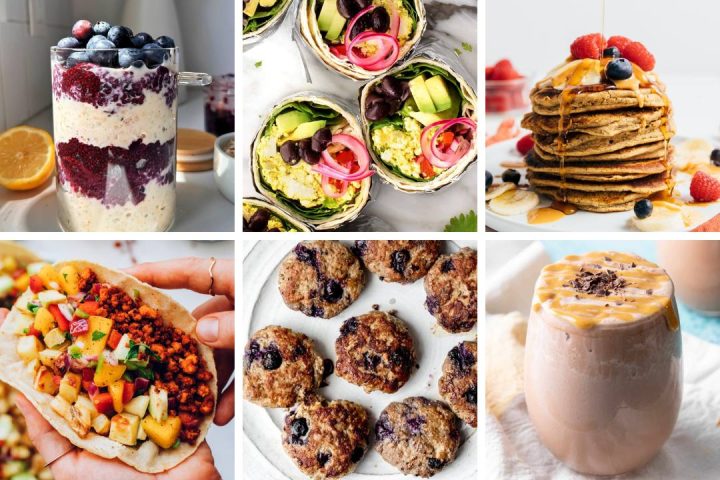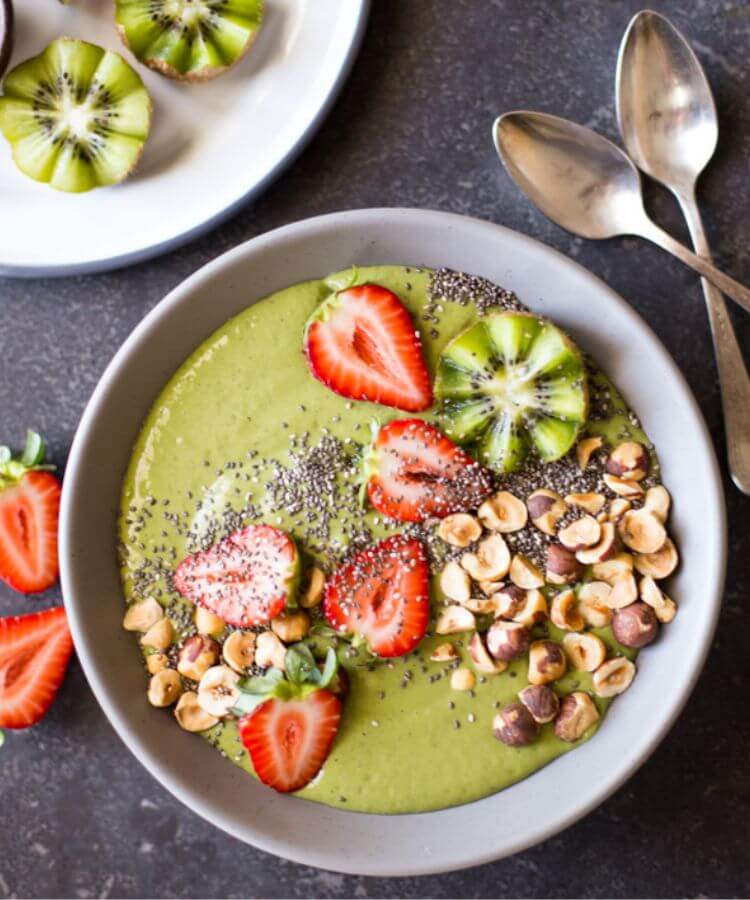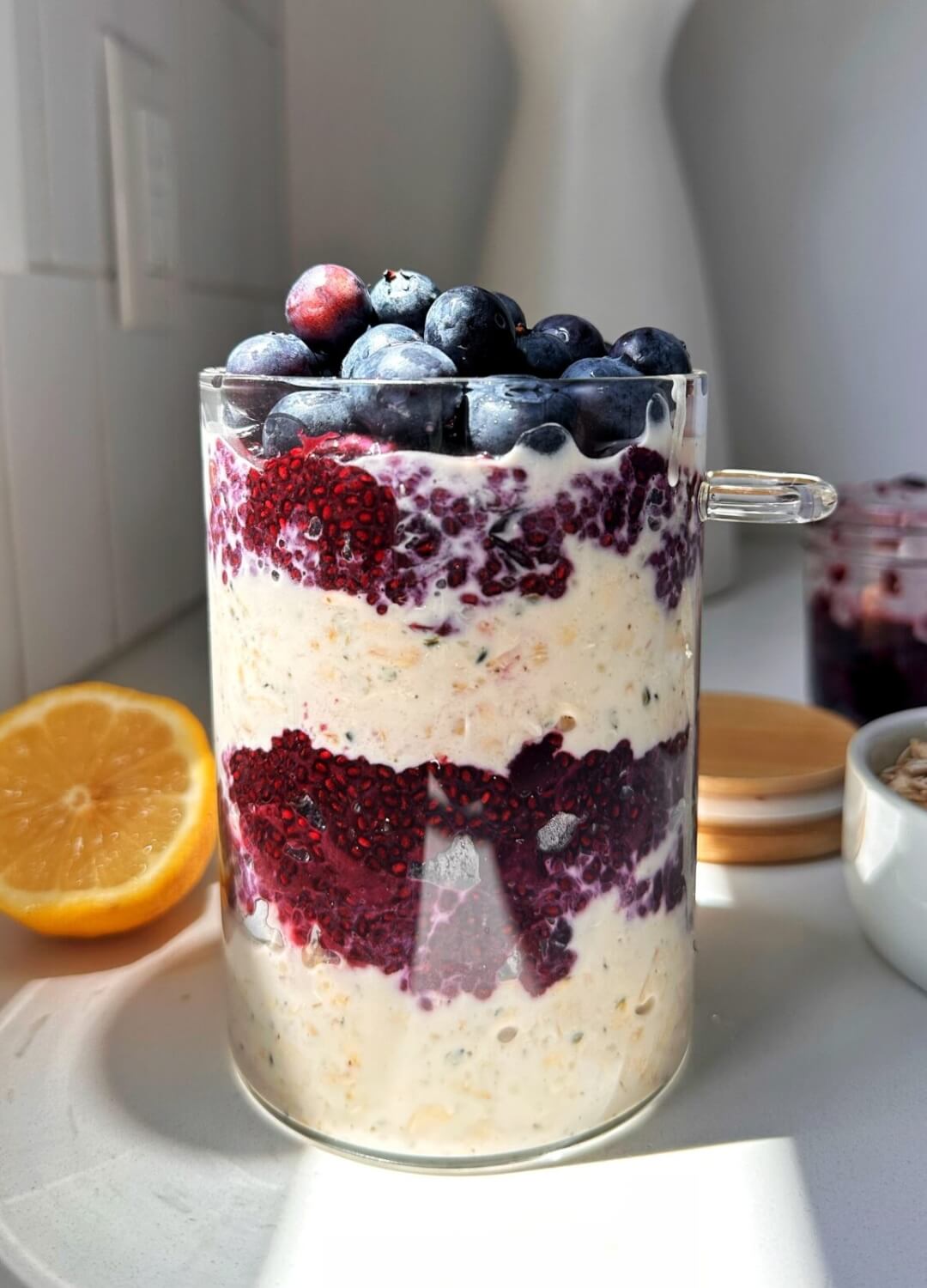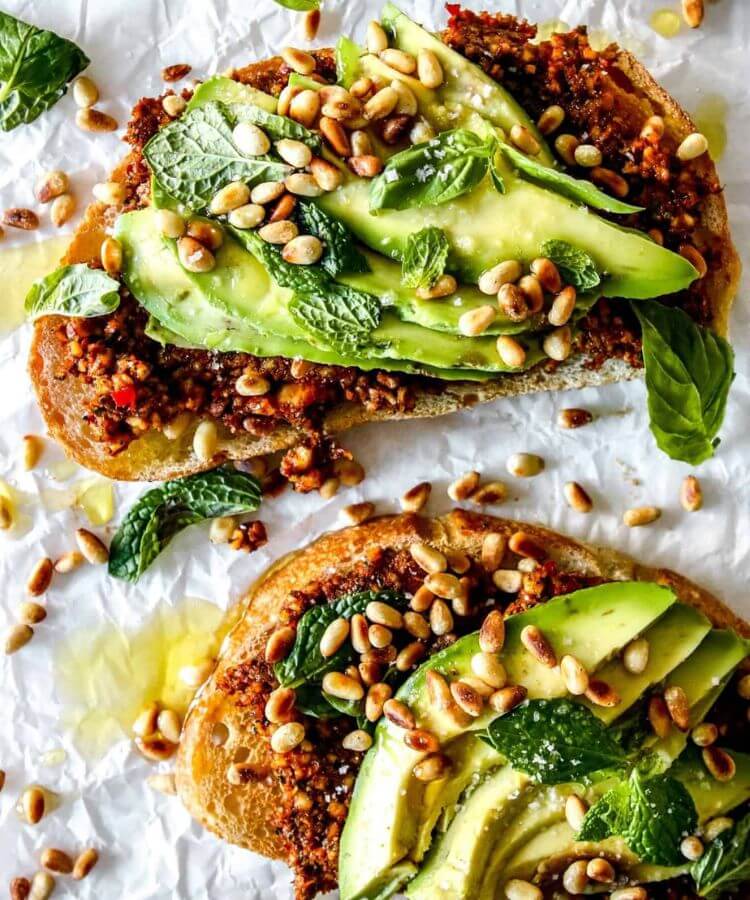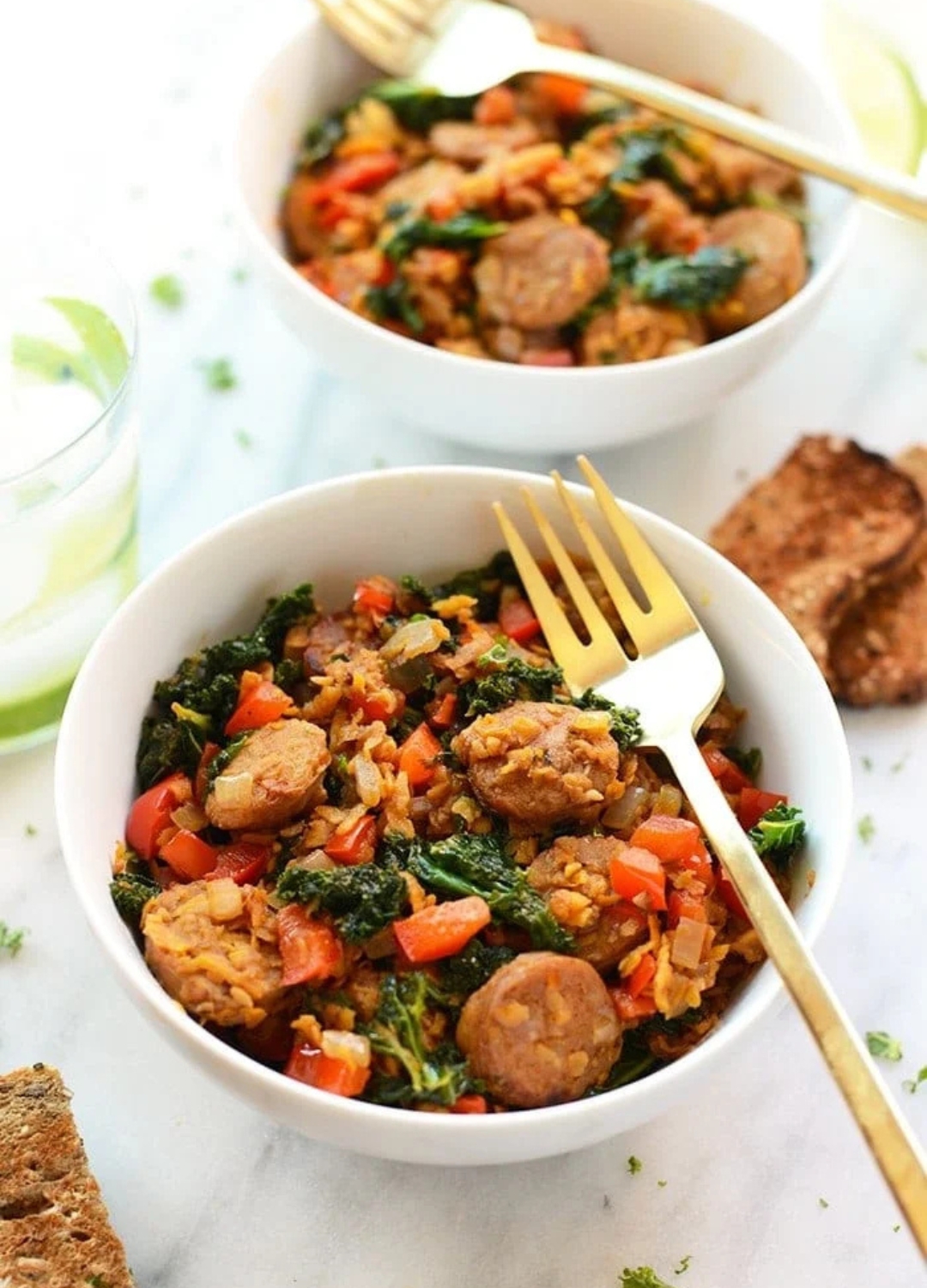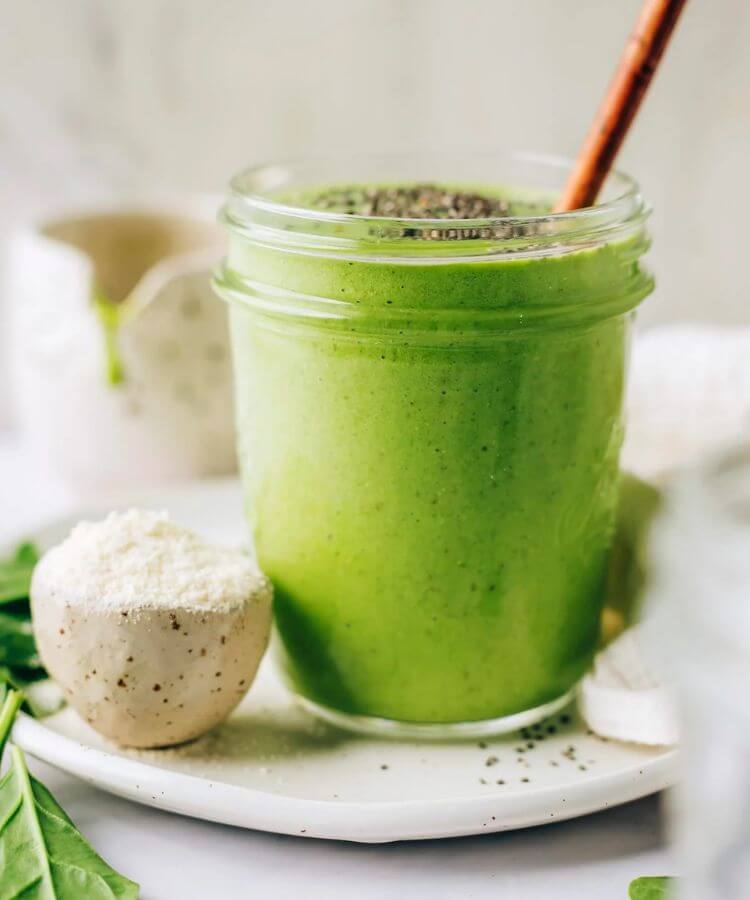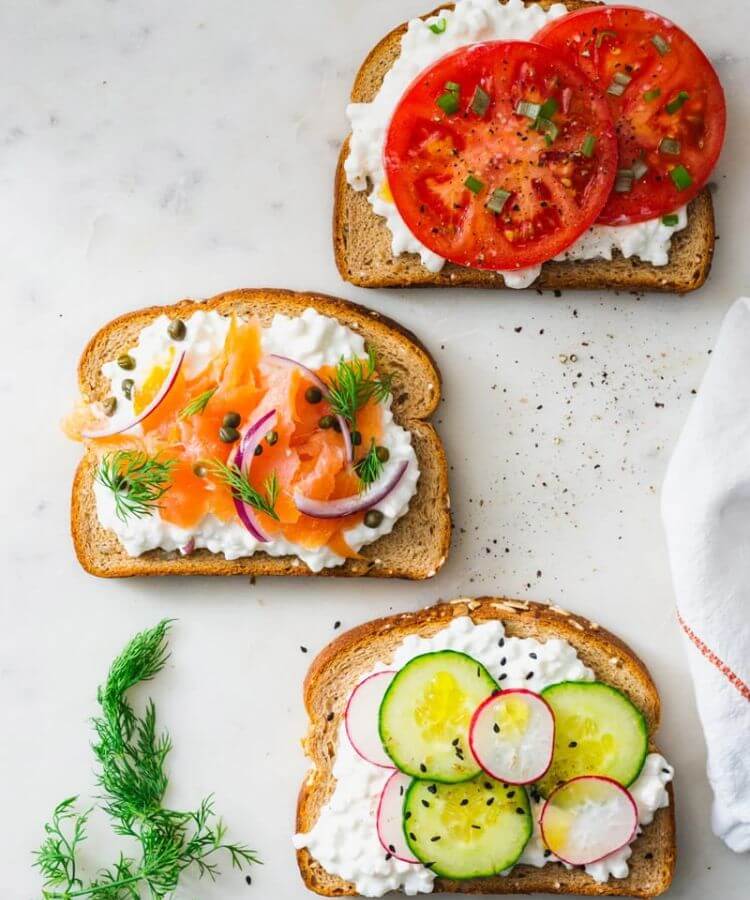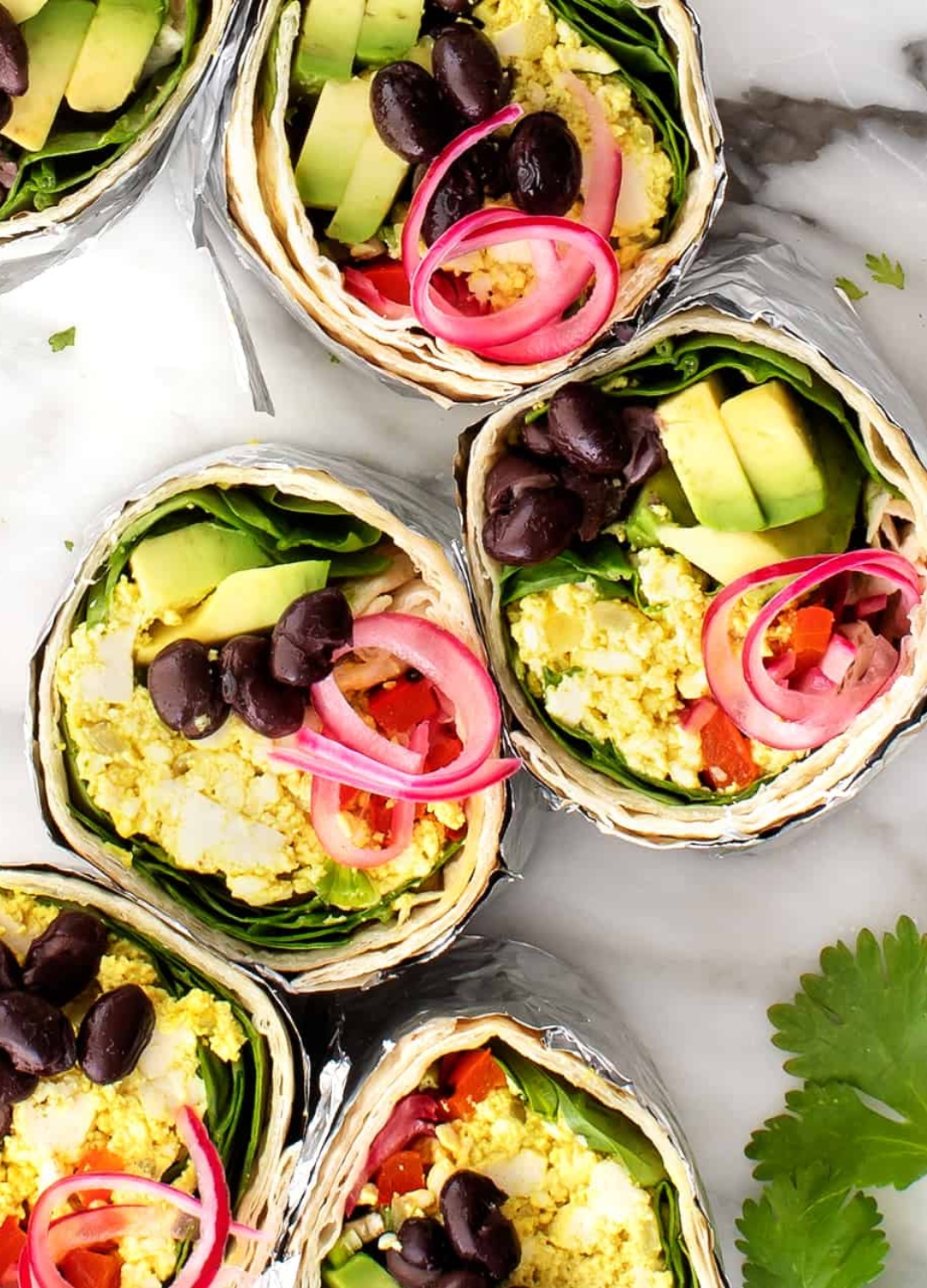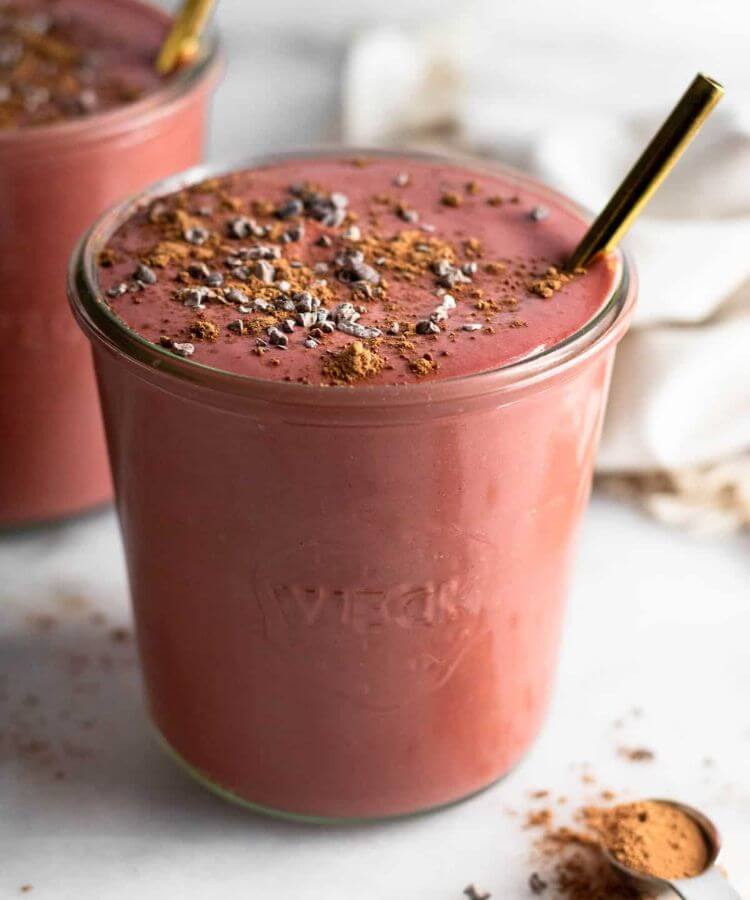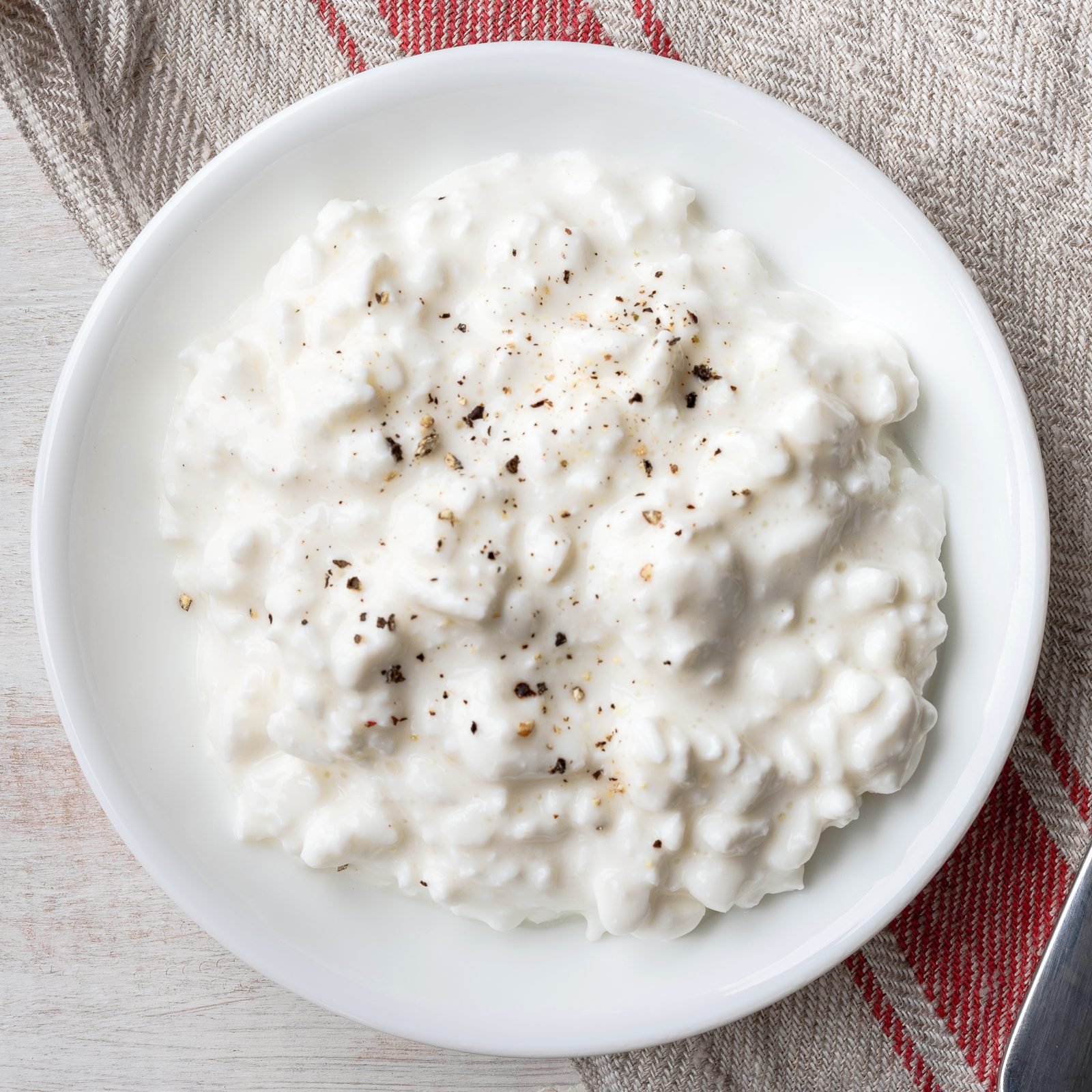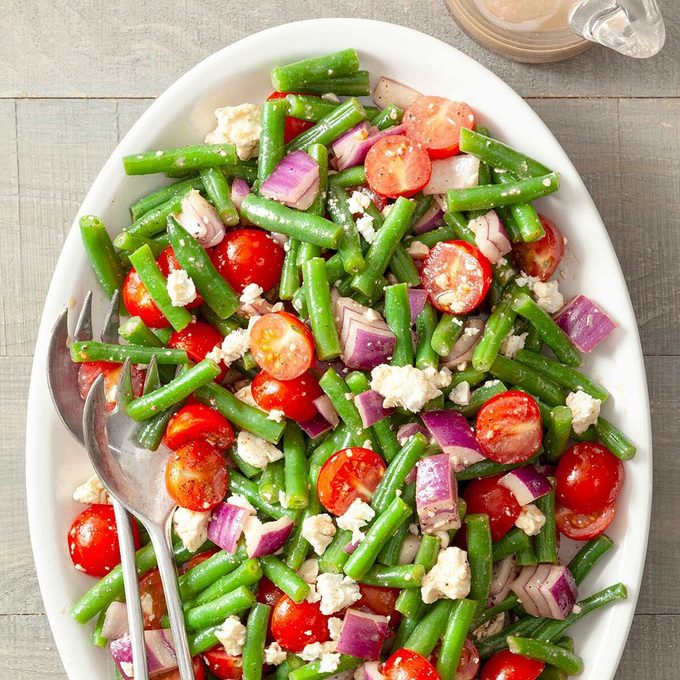22 Winter Dinners for a Healthy Gut and Weight Loss
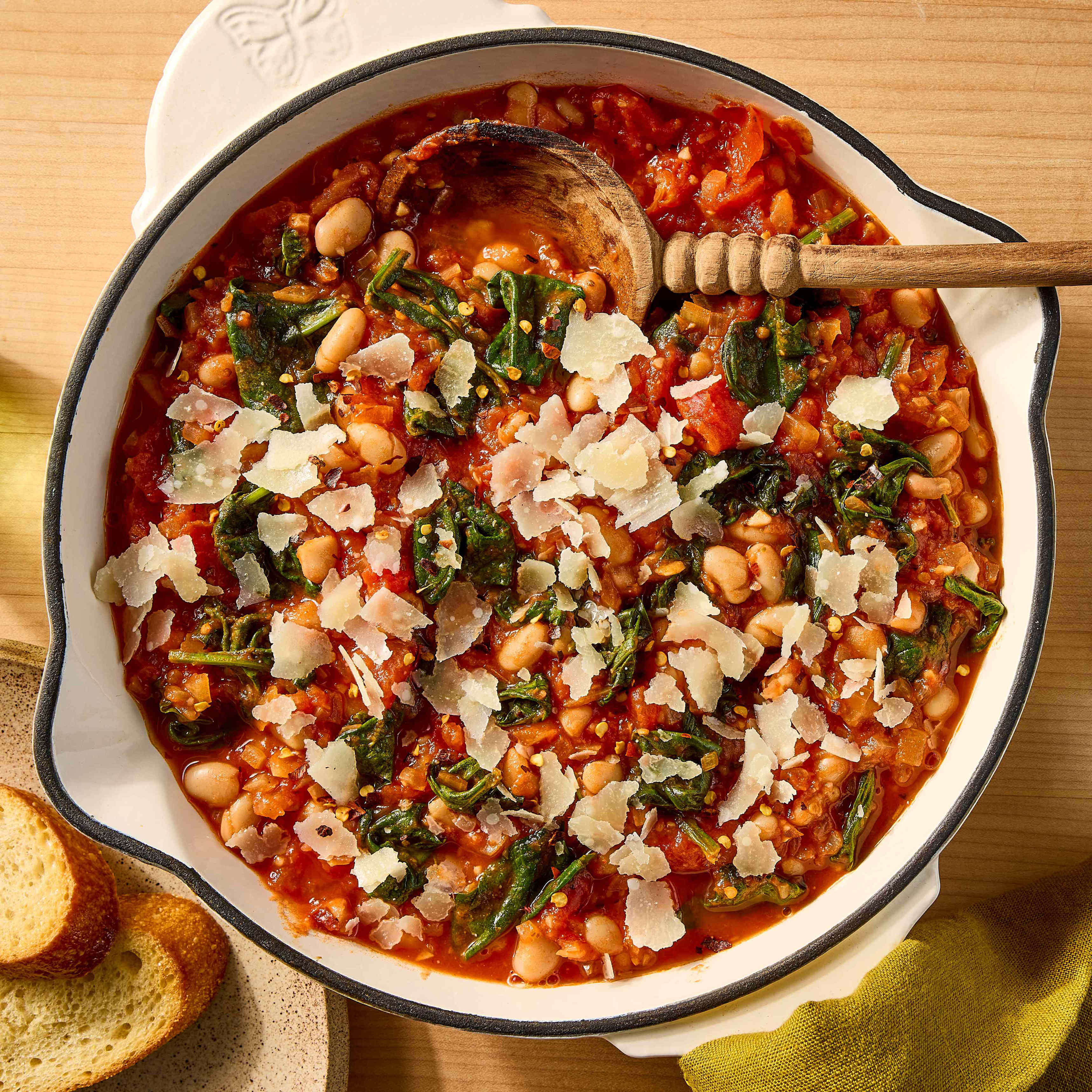
Winter is the perfect time to cozy up with hearty, nourishing meals that support your overall well-being. These recipes are designed to bring warmth and comfort while also promoting gut health and digestion. They feature ingredients like garlic, mushrooms, and beans, which are known for their beneficial effects on the digestive system. Each dish contains at least 6 grams of fiber and/or 15 grams of protein, and is under 575 calories per serving. This makes them ideal choices for those looking to maintain a healthy weight or simply enjoy satisfying, light meals during the colder months.
Creamy Spaghetti with Brussels Sprouts
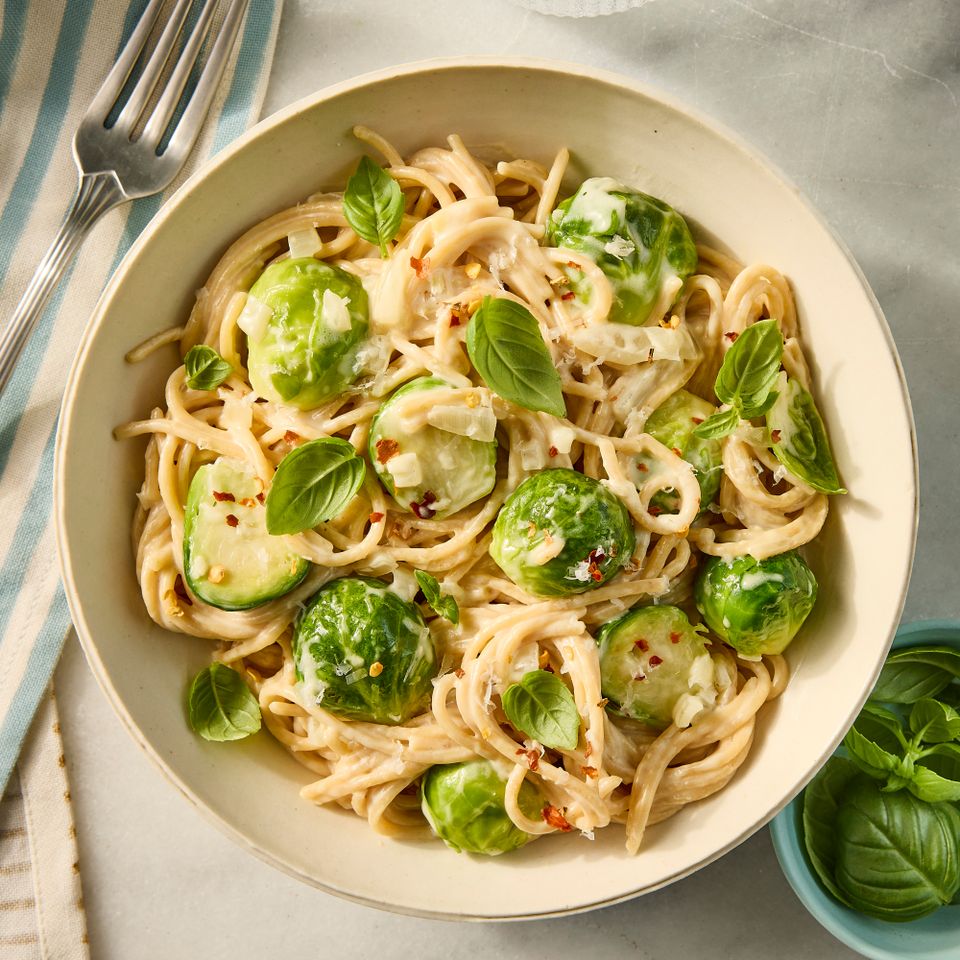
This one-pan dish starts with pasta that simmers in broth, creating a rich, starchy base. It’s then coated in a creamy Asiago sauce with a hint of red pepper for a subtle kick. The addition of caramelized Brussels sprouts and shallots brings a sweet, earthy depth, while fresh basil adds a bright finish. It’s a simple yet flavorful meal that’s perfect for a busy weeknight when you’re craving something comforting.
White Bean Skillet
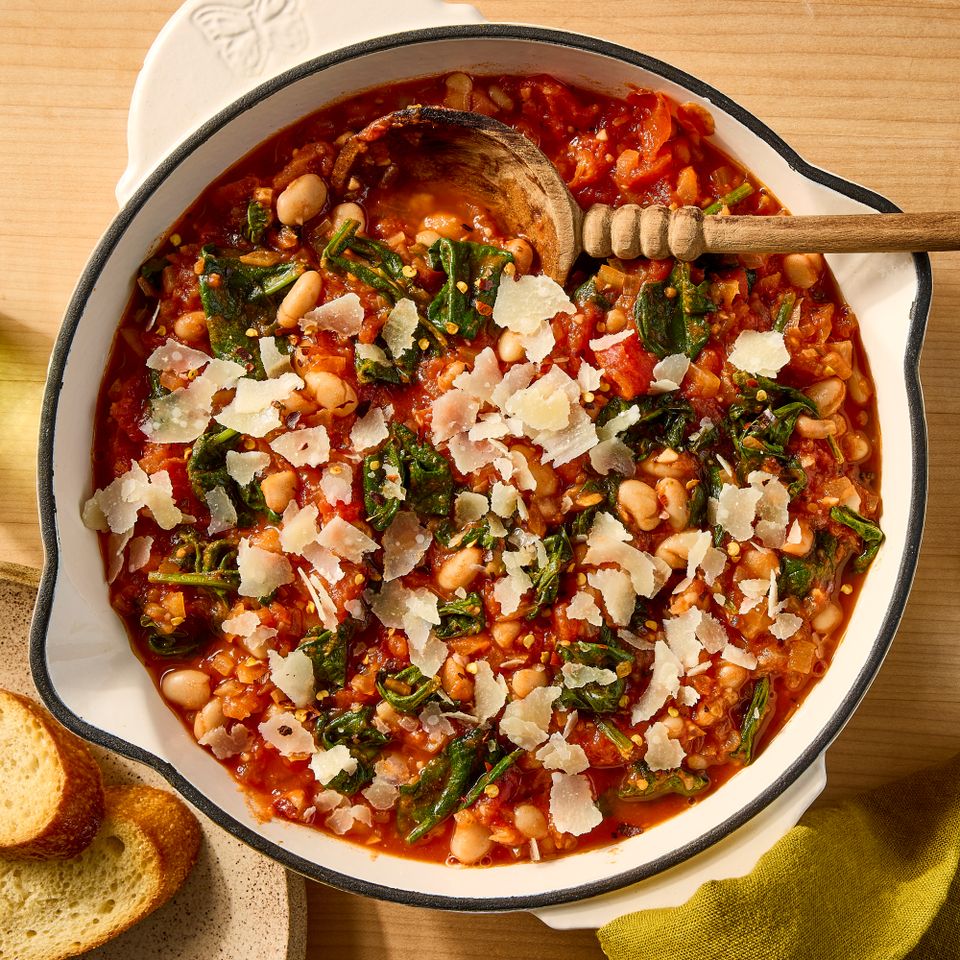
A savory blend of sweet onions, tomatoes, and garlic forms the foundation of this dish. Creamy white beans are added for a hearty texture, and a handful of spinach brings freshness and color. A sprinkle of Parmesan cheese ties everything together with a salty richness. Served with toasted whole-wheat baguette slices for dipping, it’s a quick and satisfying dinner that’s great for both weeknights and weekend suppers.
Lemon-Turmeric Cabbage & White Bean Soup
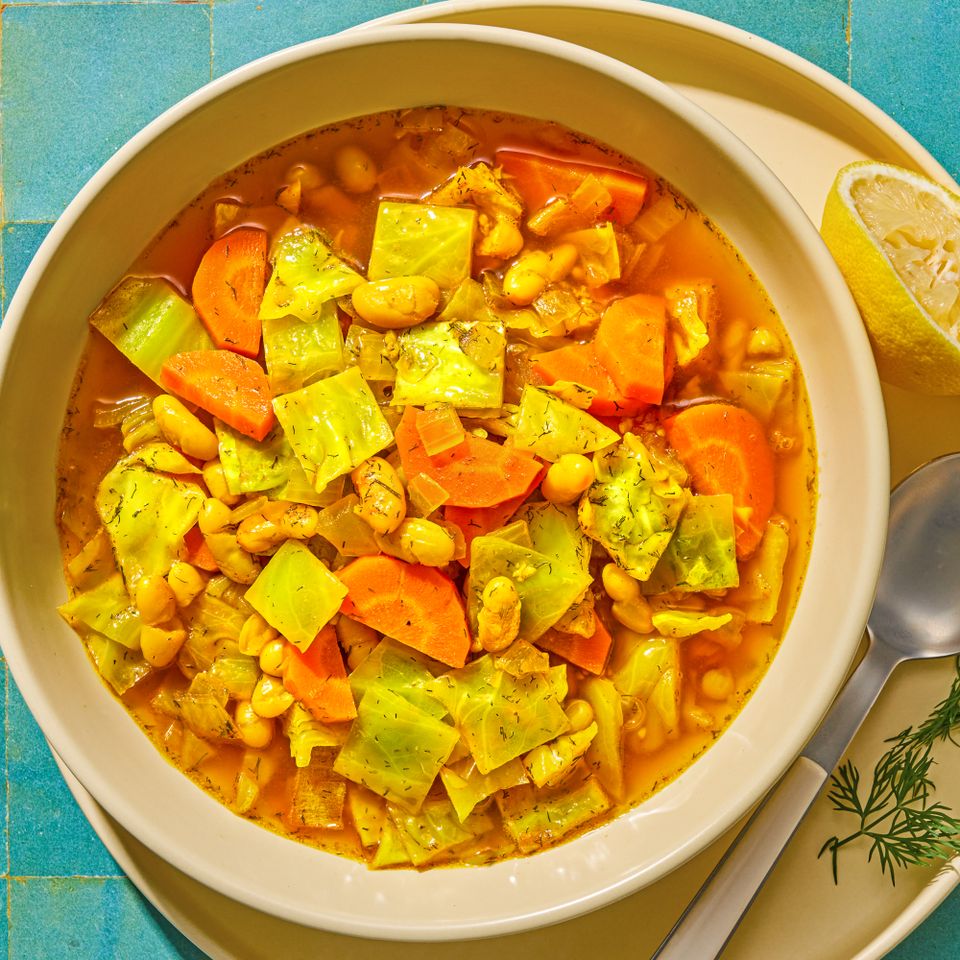
This soup combines tender cabbage and creamy cannellini beans with aromatic spices like turmeric and lemon. The tangy brightness of lemon juice lifts every spoonful, making it a light but deeply satisfying dish. It’s an easy recipe that’s perfect for a cozy weeknight meal.
Chickpea Casserole with Spinach & Feta
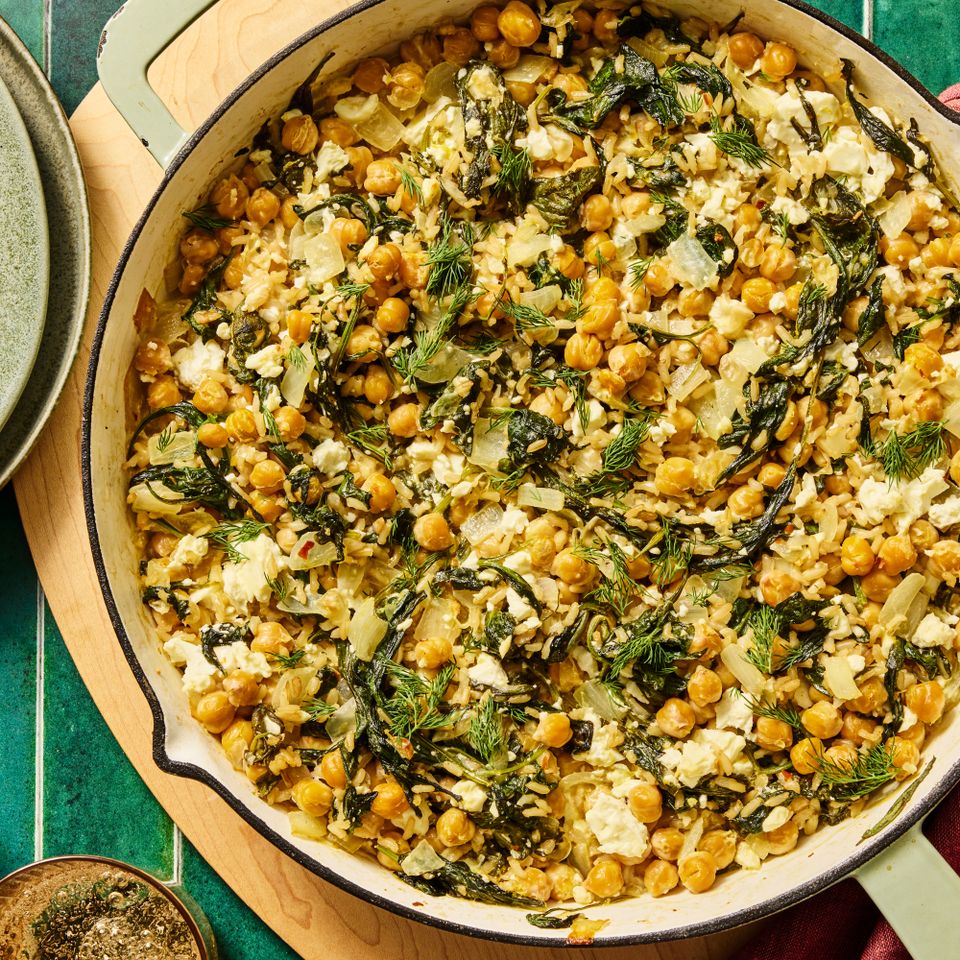
This casserole blends tender spinach, chickpeas, and brown rice with a touch of cream cheese and tangy feta. Fresh dill, nutmeg, and lemon juice add layers of flavor, while a hint of red pepper introduces gentle heat. Baked until bubbly and topped with lemon zest, it’s a comforting and vibrant dish that’s sure to please.
Marry Me White Bean Soup
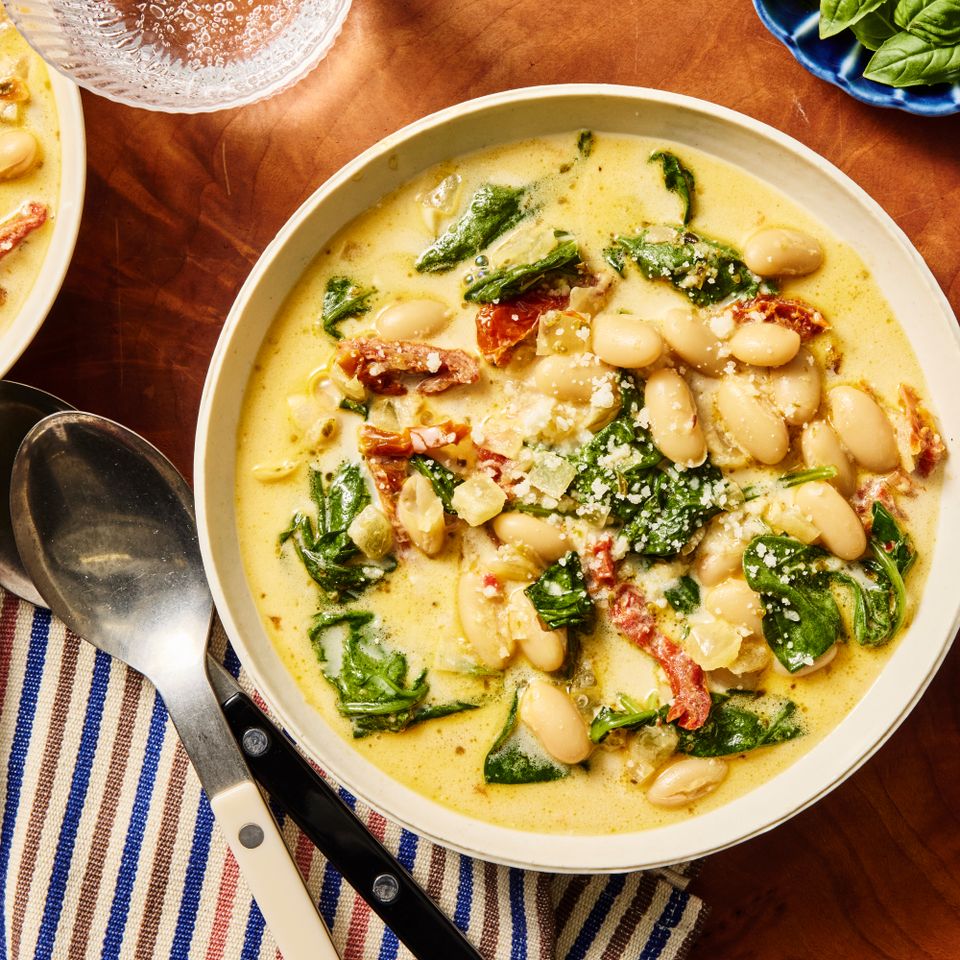
Inspired by the flavors of Marry Me Chicken, this vegetarian soup features sun-dried tomatoes, garlic, cream, and Parmesan. It’s finished with fresh basil and extra cheese, creating a rich, soul-warming dish that’s crowd-pleasing and perfect for gatherings.
Broccoli-Cheddar Butter Beans

This dish offers the creamy, cheesy goodness of broccoli-Cheddar soup in a convenient skillet form. Tender butter beans provide a creamy texture and plant-based protein, while broccoli florets add color. Sharp Cheddar cheese melts in for that classic flavor, making it a filling main course.
Butternut Squash & Black Bean Enchilada Skillet
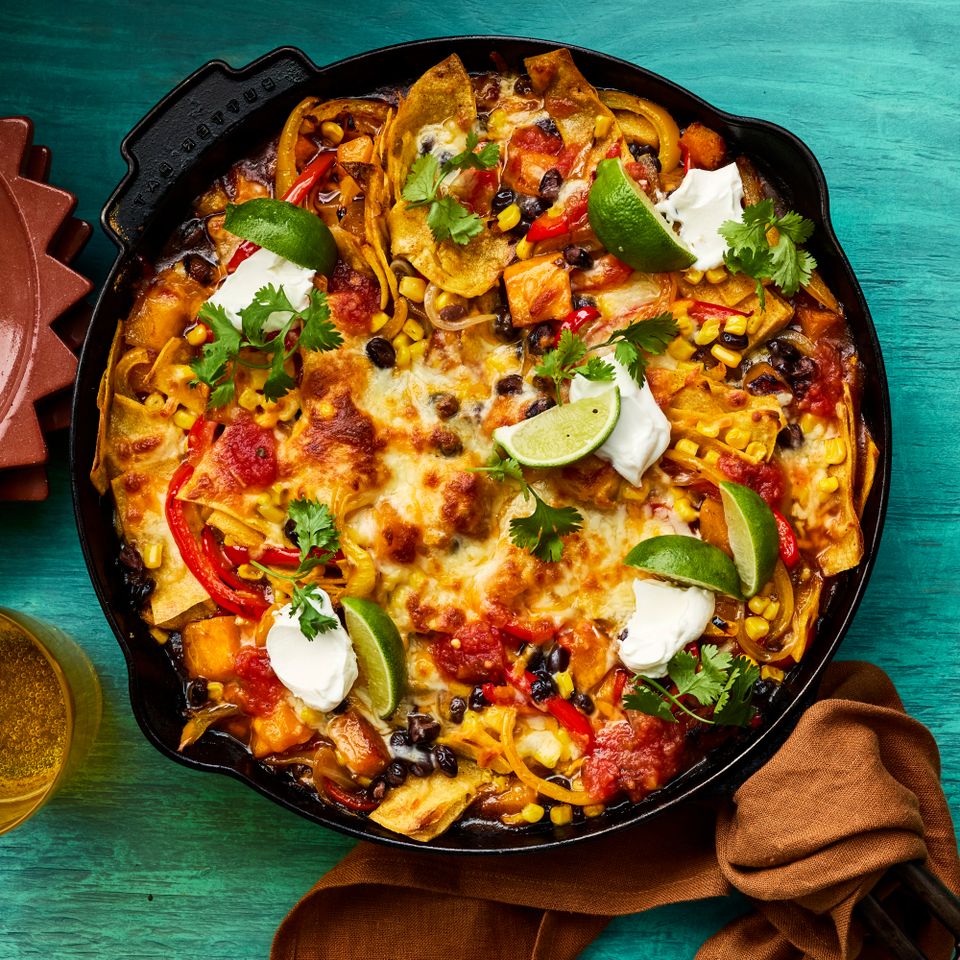
Tender cubes of butternut squash and hearty black beans simmer in green enchilada sauce, with tortilla strips stirred in for added texture. A layer of melted cheese ties everything together, creating a satisfying, vegetarian-friendly dish that’s easy to prepare.
Creamy Chickpea Soup

This quick and easy soup comes together in just 20 minutes. Cream cheese adds a velvety texture, while cilantro and crunchy tortilla strips provide a refreshing contrast. It’s a one-pot meal that’s perfect for busy weeknights and can be enjoyed by the whole family.
Spanakopita-Inspired Skillet Beans
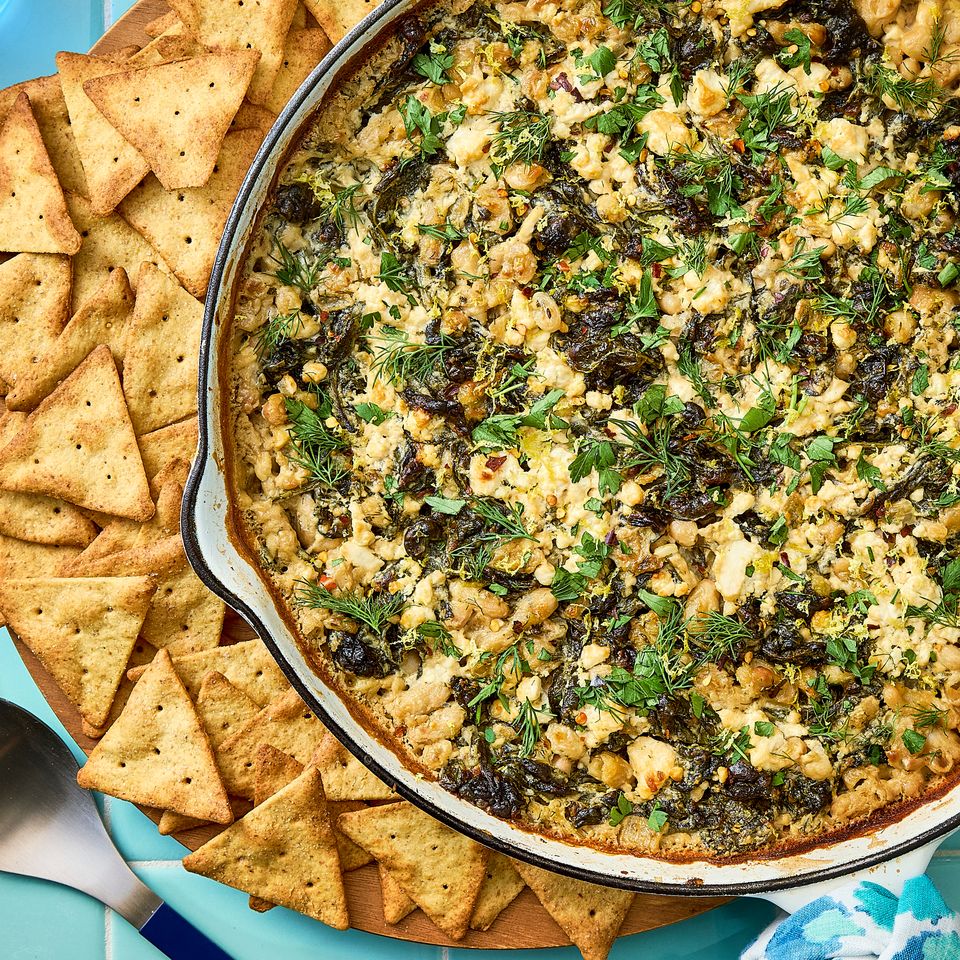
These skillet beans draw inspiration from spanakopita, the Greek spinach pie. Cannellini beans add protein and fiber, while fresh dill, parsley, and a squeeze of lemon provide a bright, herbaceous finish. It’s a creamy, comforting dish that’s great for any season.
High-Fiber Vegetable Stew
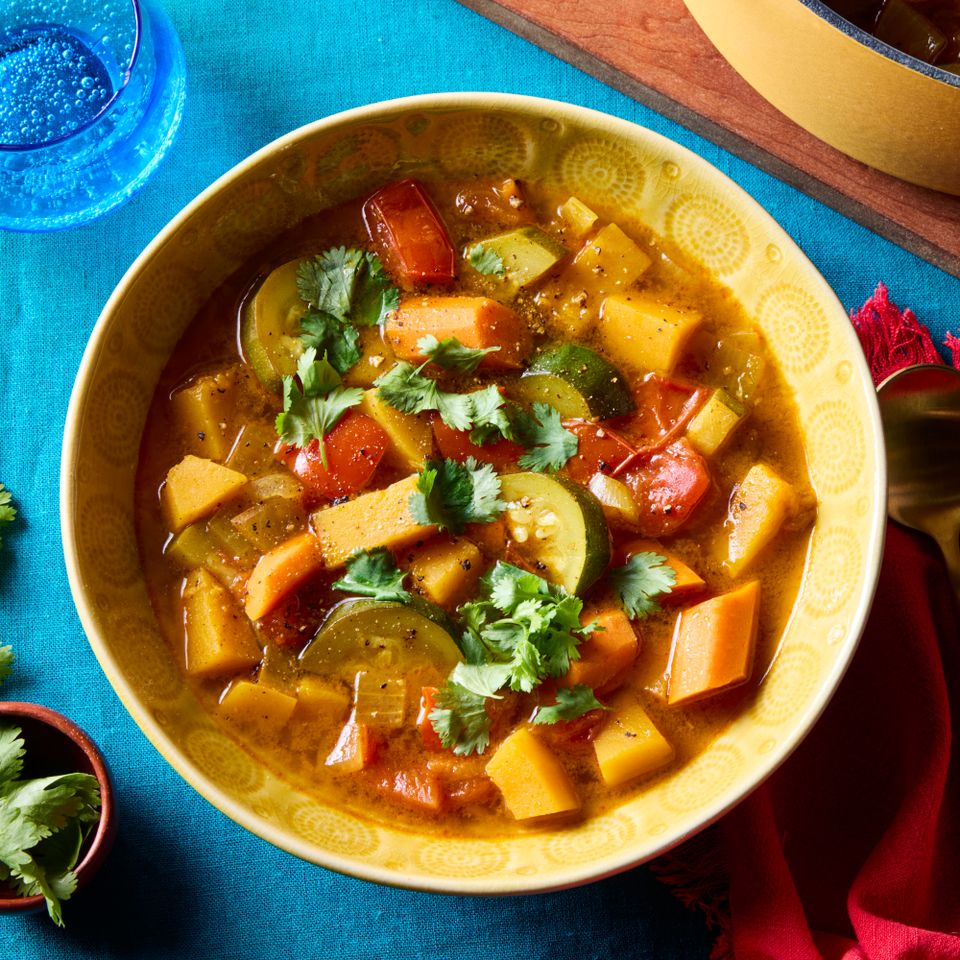
This vegetable stew is a cozy dish for two, made with late-summer and early-fall produce. Simmered with warm spices and a savory broth, it’s delicious served with warm naan on the side for dipping. It’s a perfect way to celebrate seasonal flavors.
High-Protein Chicken & Sweet Potato Enchilada Skillet
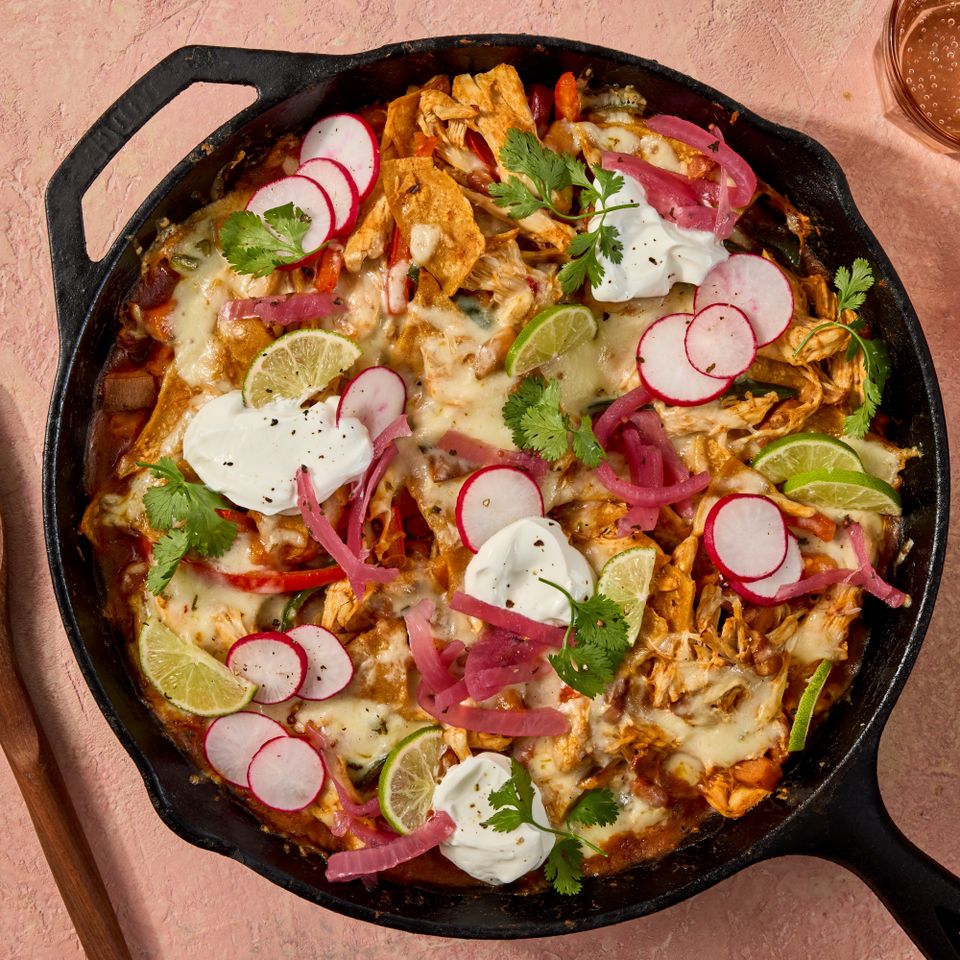
This one-pan meal is ideal for busy weeknights. Tender chunks of sweet potato and shredded chicken combine with store-bought enchilada sauce for a flavorful shortcut. It’s a hearty, satisfying dish that’s easy to make and packed with nutrients.
High-Protein Spaghetti Squash Caprese

This fun twist on the classic Italian salad combines traditional caprese ingredients with roasted spaghetti squash. The squash is tossed with juicy plum tomatoes, creamy mozzarella, fragrant fresh basil, and great northern beans for a boost of plant-based protein. A drizzle of balsamic glaze ties the dish together with a sweet-tangy finish.
Chicken Guacamole Bowls
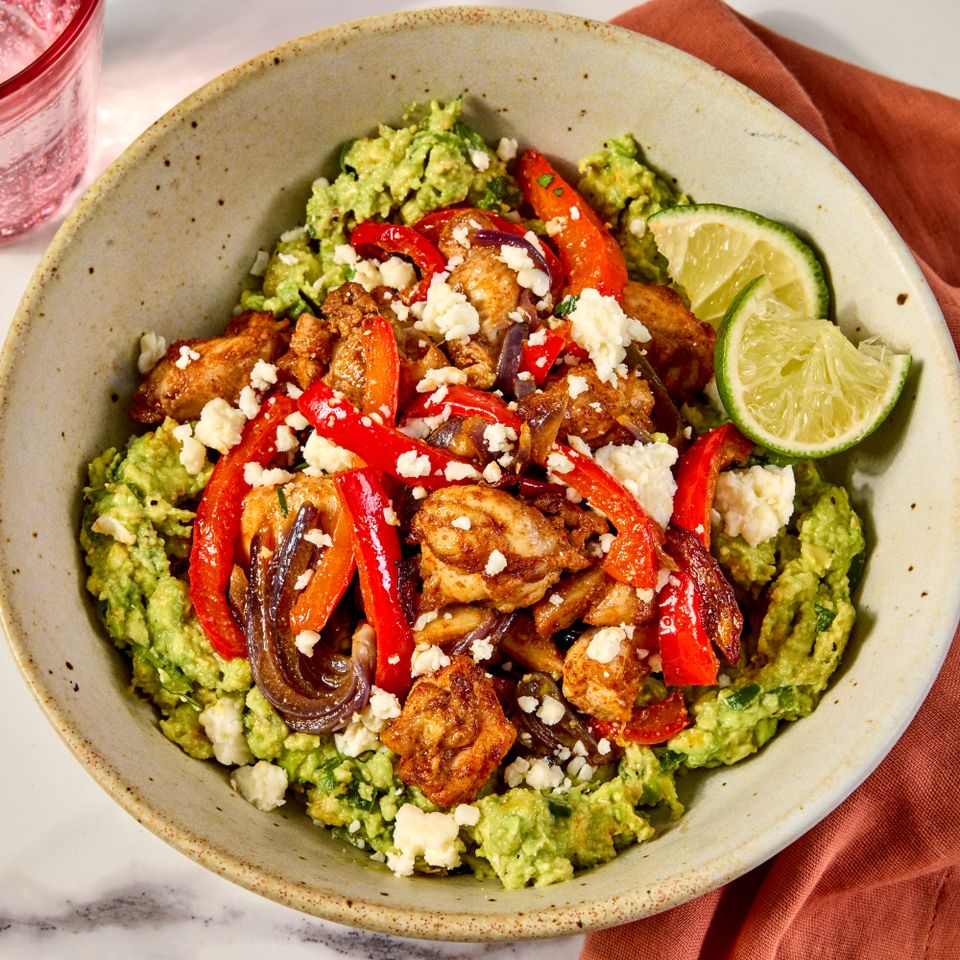
Juicy chicken thighs and colorful veggies are served over a fresh and creamy guacamole with a sprinkle of tangy cotija cheese. A squeeze of lime at the end brightens up the dish and ties all the bold, fresh flavors together.
Marry Me White Bean Salad
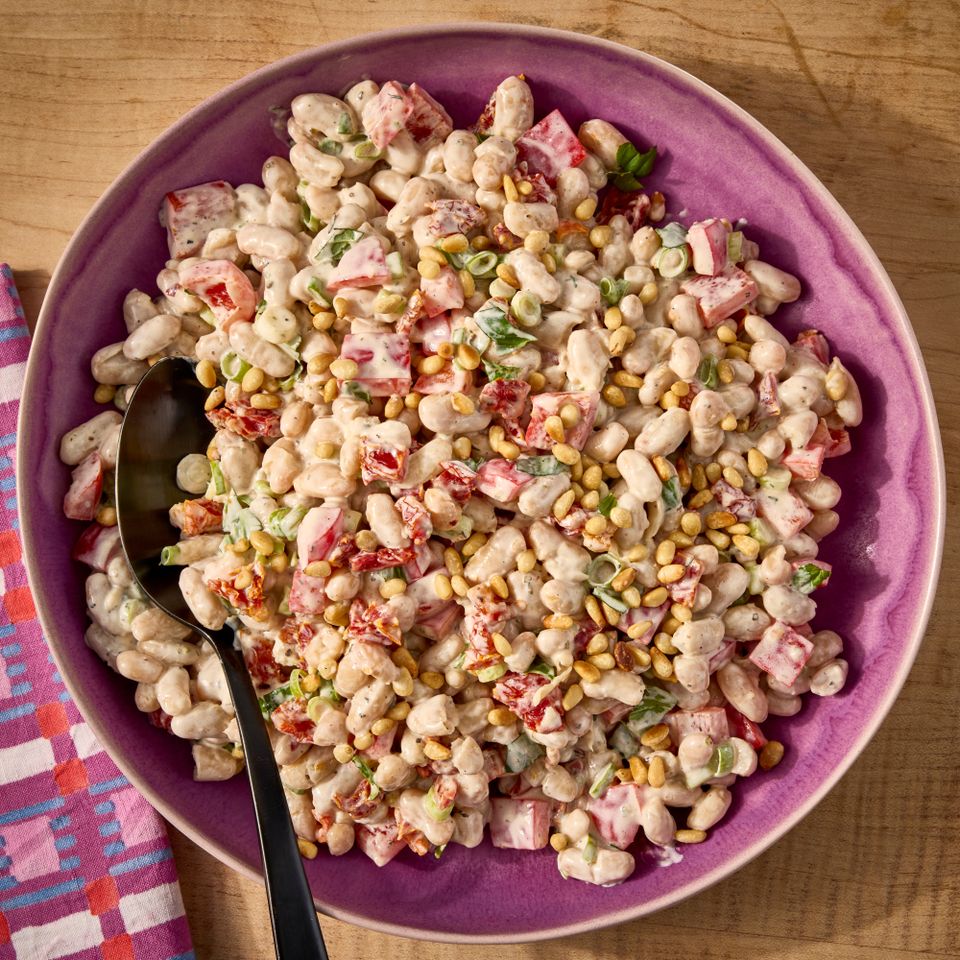
This salad is a bright, flavor-packed dish that’s hard not to fall for. Inspired by Marry Me Chicken, the tender white beans are tossed with sun-dried tomatoes, fresh basil, and a creamy dressing that soaks into every bite. It’s quick to throw together and perfect for meal prep, picnics, or pairing with grilled meats.
Sheet-Pan Salmon and Shaved Brussels Sprouts with Lemon-Garlic Drizzle
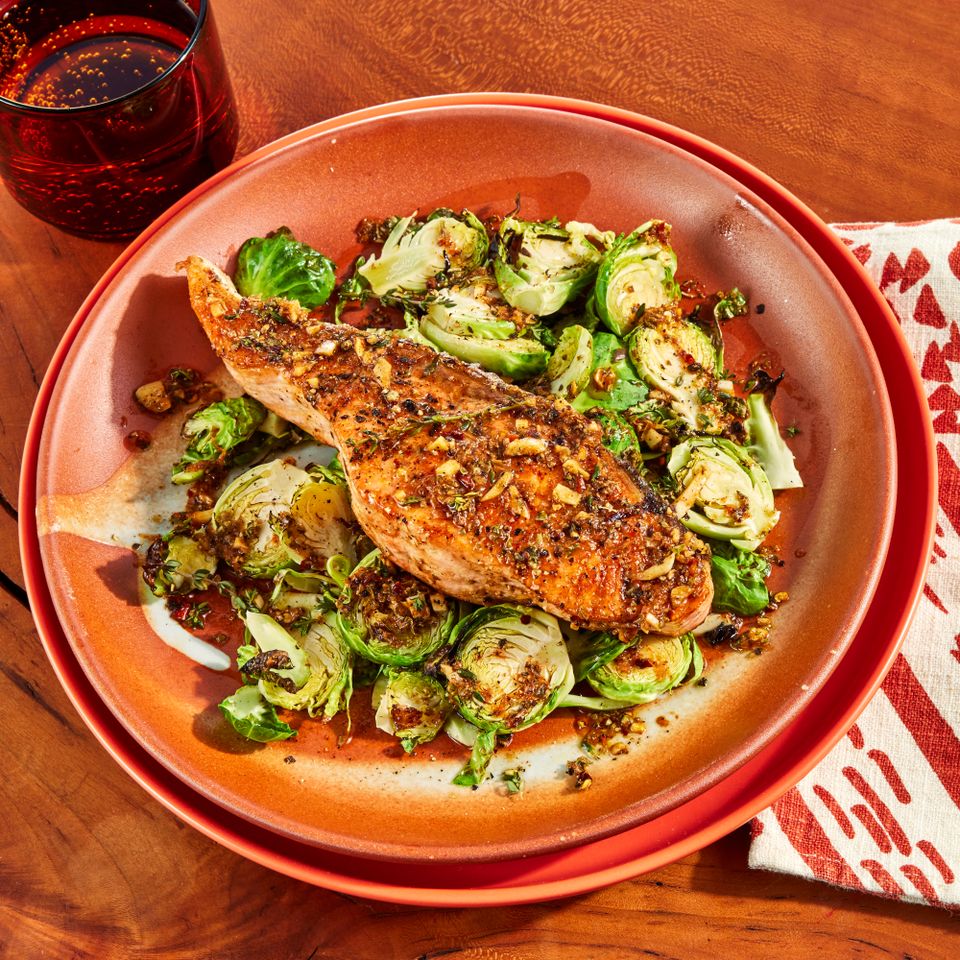
Heart-healthy salmon is nestled among shaved Brussels sprouts, both of which soak up amazing flavor from the double drizzle of lemon-garlic sauce. It’s a simple yet elegant dish that’s perfect for a weeknight dinner.
5-Ingredient Taco Stuffed Peppers
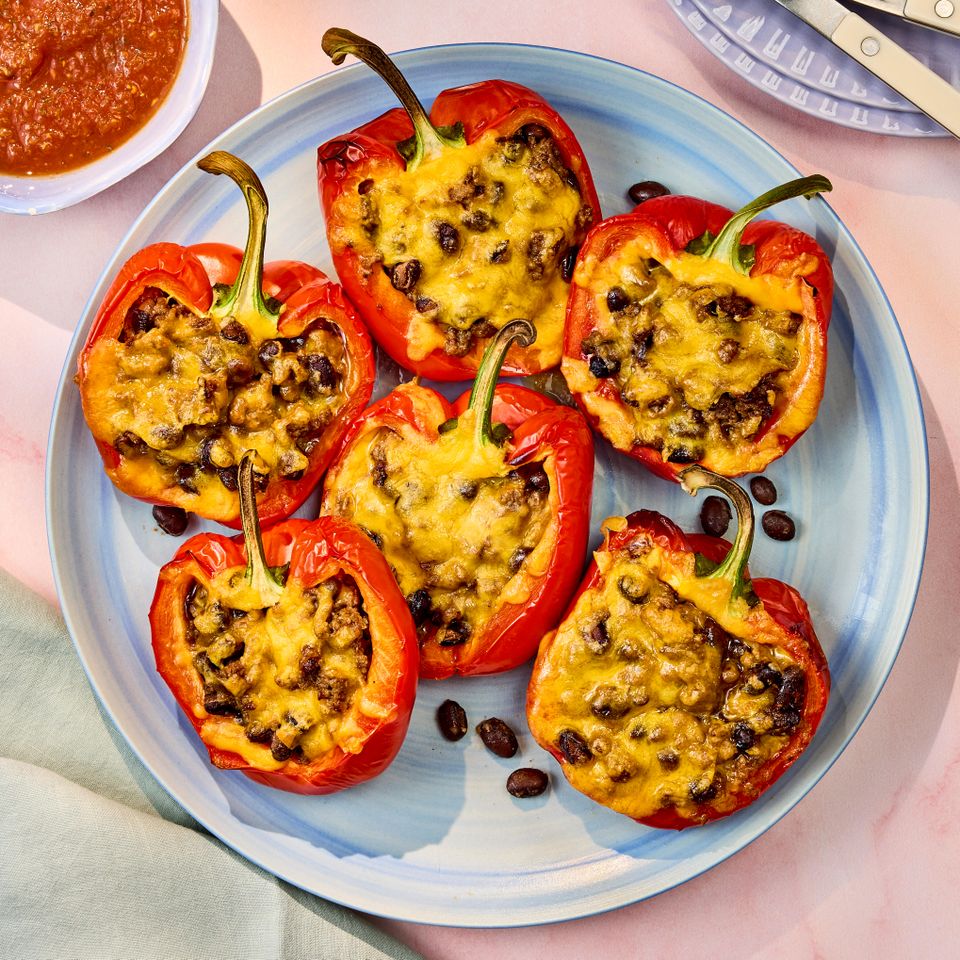
These five-ingredient stuffed peppers are a simple, satisfying twist on taco night with all the flavors you love. Sweet bell peppers act as the perfect vessel for a filling of lean ground beef, black beans, salsa, and melty cheese. Serve them with a dollop of sour cream, sliced avocado, and/or fresh cilantro for a little extra flair.
Spaghetti with Mushrooms, Spinach & Ricotta
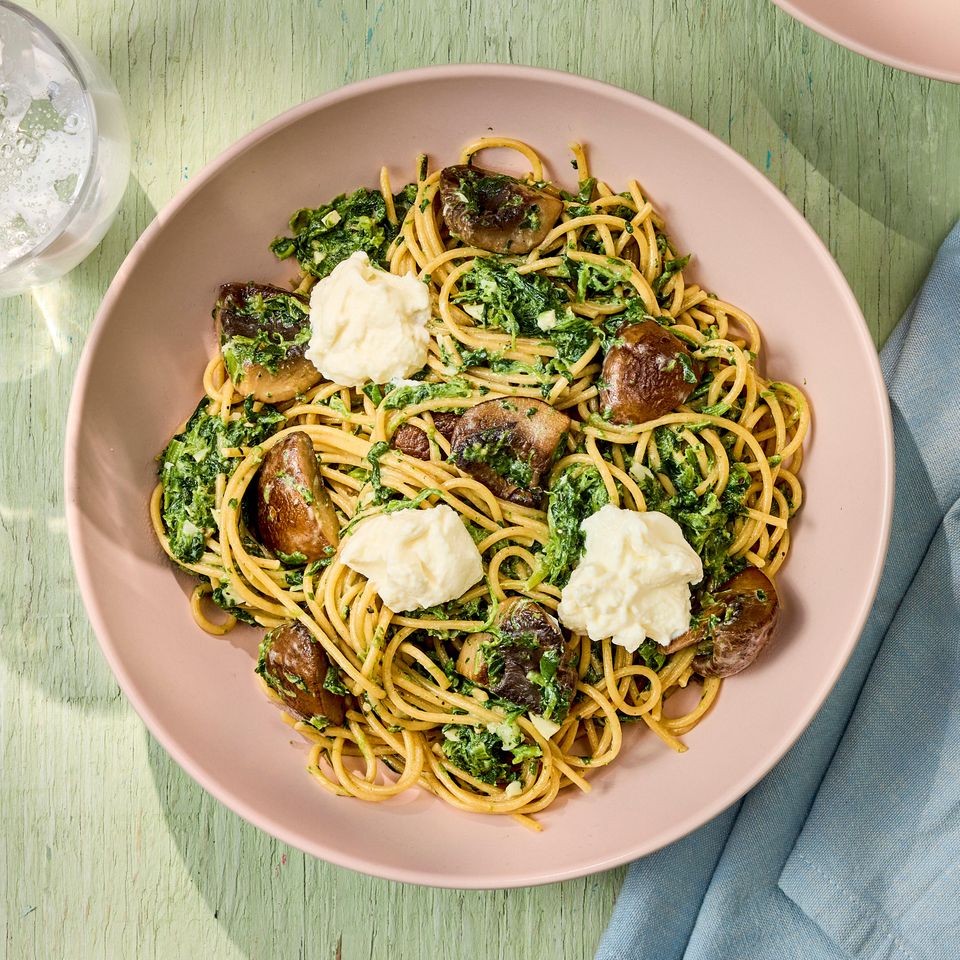
Earthy mushrooms, spinach, and garlic flavor the pasta alongside whole-milk ricotta that creates a creamy sauce. You can elevate the flavor even more by using wild mushrooms for a deeper savory flavor and finishing with a squeeze of lemon to brighten everything up.
Roasted Veggies with Halloumi & Chickpeas
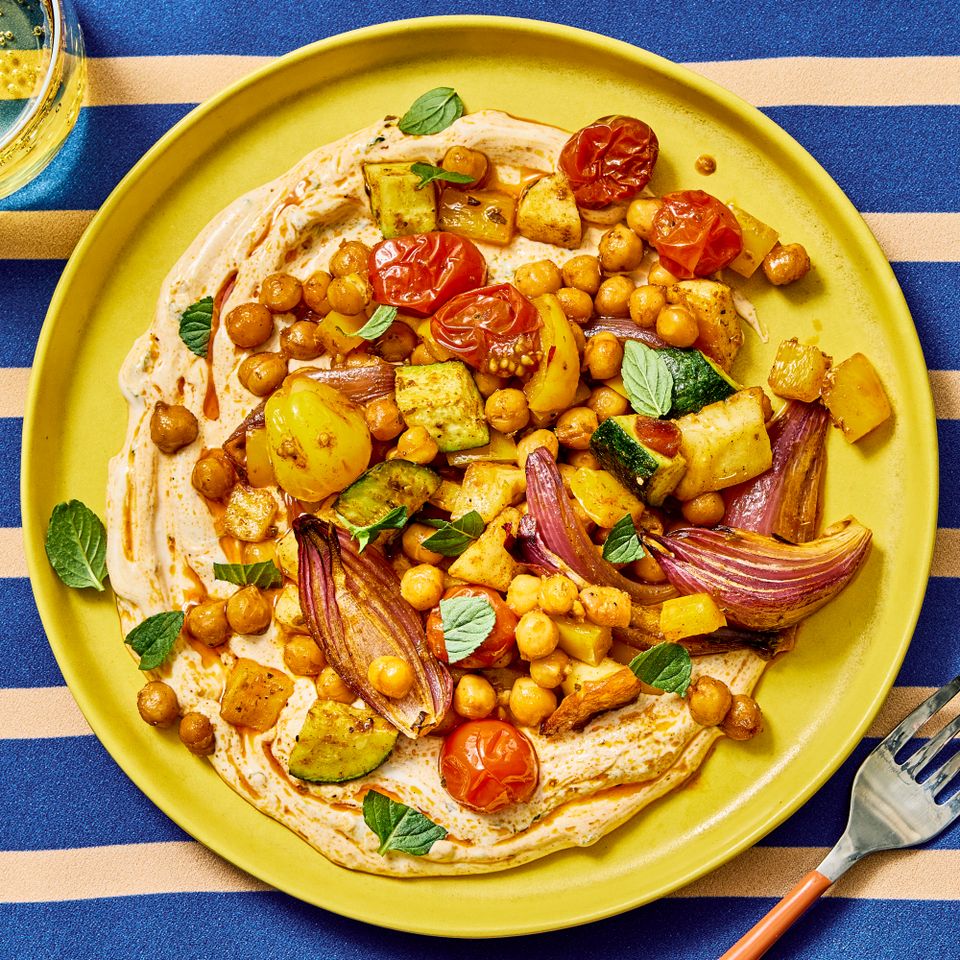
This sheet-pan recipe is perfect for a weeknight dinner with easy cleanup. Chickpeas and halloumi provide protein to make this dish filling and satisfying. Roasting everything on the same sheet pan creates crispy, caramelized bites that meld beautifully with the creamy yogurt spread underneath.
Sheet-Pan Chicken Thighs with Red Cabbage & Sweet Potatoes
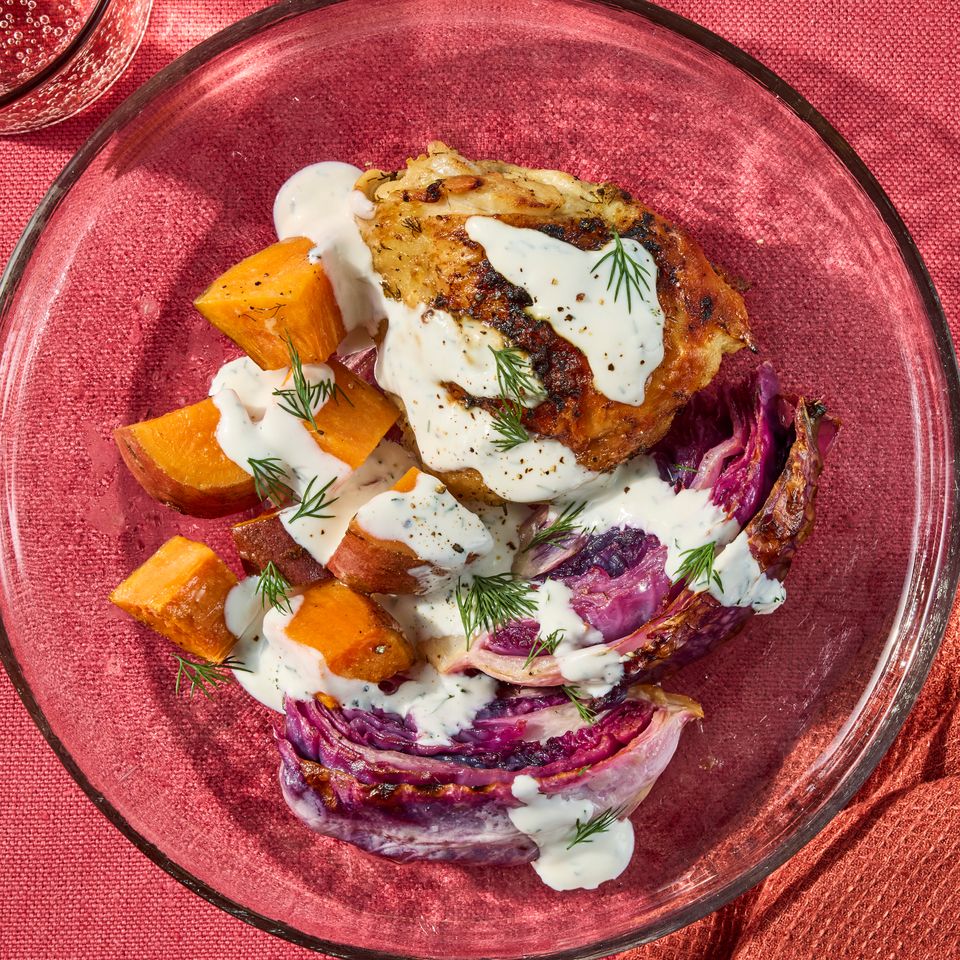
The beauty of this dish lies in its simplicity—everything cooks together on one sheet pan, making cleanup a breeze. As the ingredients roast together, the chicken juices meld with the vegetables, creating a savory dinner.
Spinach & Artichoke–Stuffed Butternut Squash

Tender roasted butternut squash halves are filled with a cheesy spinach-and-artichoke mixture. A sprinkle of crushed red pepper adds heat, and a drizzle of balsamic glaze adds a tangy-sweet flavor contrast that ties it all together.
Saag Aloo Matar
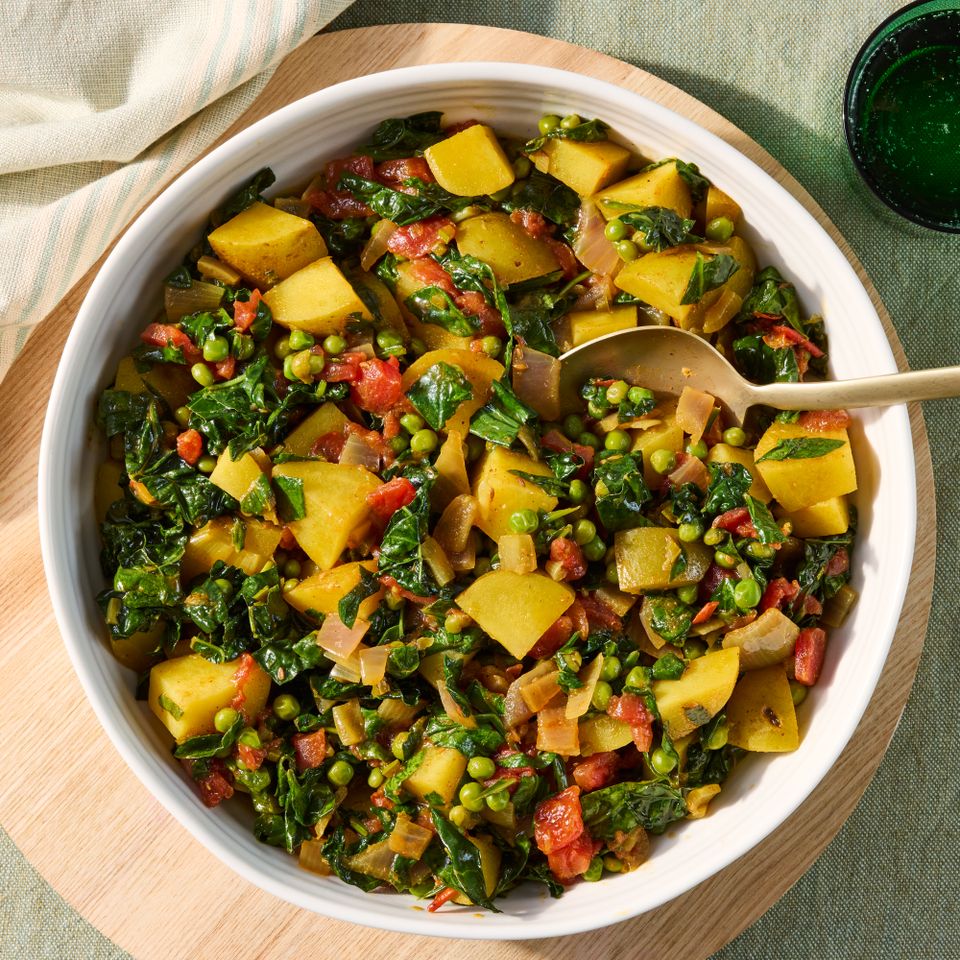
This cozy one-skillet dinner draws inspiration from two Indian dishes: saag aloo and aloo matar. It’s packed with plenty of vegetables, including leafy greens, potatoes, and peas, all simmered in an aromatic tomato-based sauce.
Fajita-Stuffed Mushrooms
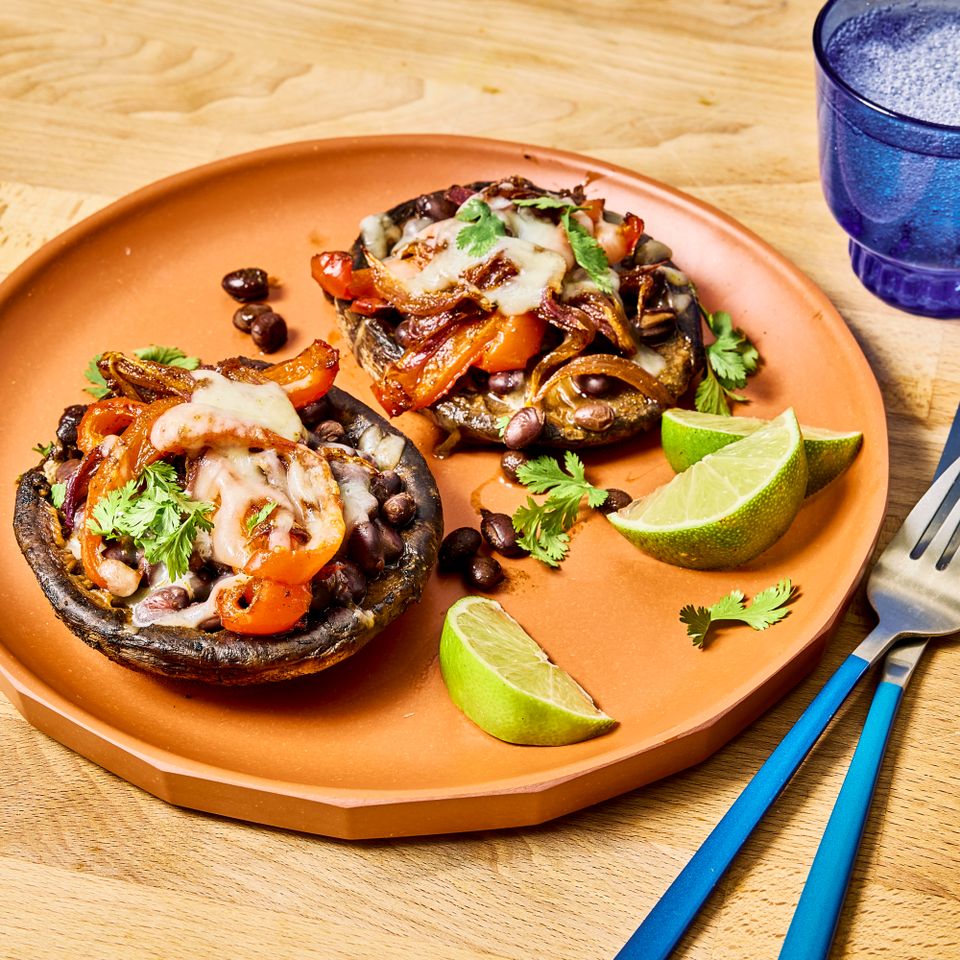
This flavorful vegetarian dish fills roasted portobello mushroom caps with fajita-style veggies and black beans, giving them a boost of fiber and protein. Top it off with melted cheese and strained (Greek-style) yogurt for a satisfying dinner.
